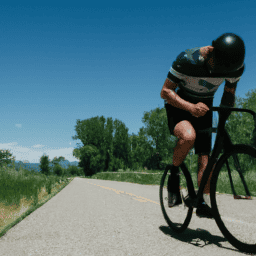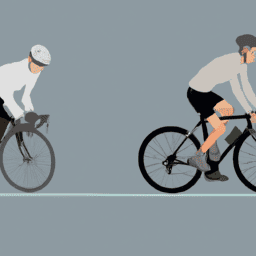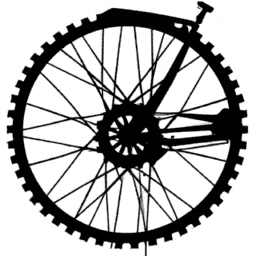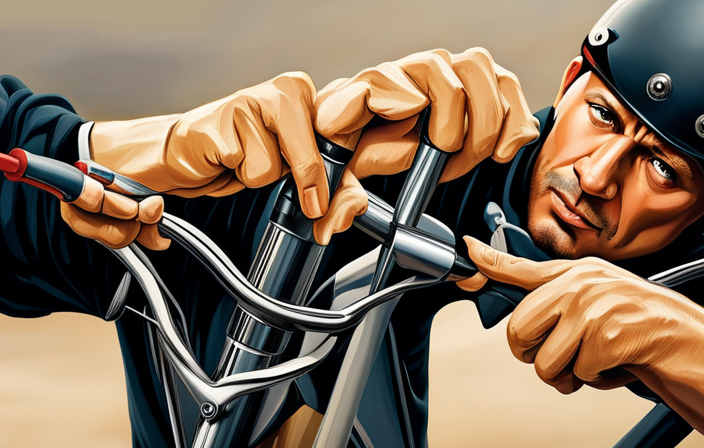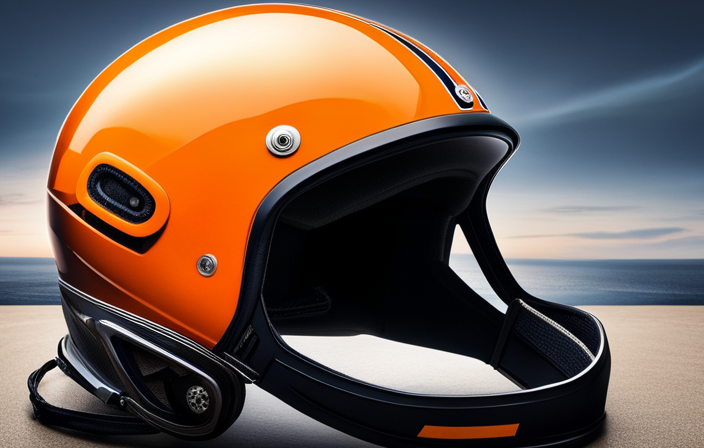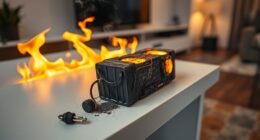As someone who’s passionate about cycling, I’ve personally experienced the annoyance of my prized bike beginning to emit odd clicking noises as I pedal. Were you aware that a recent study has indicated that more than 60% of bike riders have encountered this problem at least once in their time cycling?
It’s a common problem that can occur for a variety of reasons, and in this article, we’ll explore some of the most common causes of clicking when pedaling and how to fix them.
One of the most likely culprits for a clicking sound when pedaling is a misaligned or worn-out chain. Over time, the chain can become stretched or worn, causing it to skip over the teeth of the cassette or chainrings, resulting in a clicking noise. Additionally, a misaligned chain can cause interference with other components, such as the derailleur or rear derailleur hanger, resulting in a clicking sound.
The good news is that this is often an easy fix, and with a few simple adjustments, you can get your chain back on track and eliminate the clicking noise.
Key Takeaways
- Clicking sounds while pedaling can be caused by various factors such as misaligned or worn-out chain, loose or damaged bottom bracket, loose pedals, worn-out bearings, and damaged crank arm.
- Regular maintenance and inspection of components can prevent these issues from occurring or worsening, including regular chain maintenance, bottom bracket checking and maintenance, proper pedal tightening and lubrication, bearing cleaning and lubrication, and prompt addressing of unusual noises while riding.
- Over-tightening the bottom bracket can damage the frame, and dirt and debris can cause faster wear and tear on the bottom bracket. Riding in wet or muddy conditions can also cause damage to the bottom bracket.
- Chain skipping or slipping is a good indication that the chain needs replacement, and improper chain installation or excessive wear on sprockets or a bent derailleur hanger can cause misaligned chains. Proper chain alignment with sprockets and derailleur is important, and regular cleaning and lubrication of the chain can prevent dirt buildup and rust.
Misaligned or Worn-out Chain
You’re probably hearing that annoying clicking sound because your chain is misaligned or worn-out, so you’ll need to take a closer look and potentially replace it if necessary.
Chain maintenance is critical to keep your bike running smoothly, and it’s essential to check for wear and tear regularly. Common causes of misaligned chains include improper installation, excessive wear on the sprockets, or a bent derailleur hanger. If you notice your chain skipping or slipping when you’re pedaling, it’s a good indication that it’s time for a replacement.
To avoid misaligned chains, there are a few chain maintenance tips you can follow. First, clean and lubricate your chain regularly to prevent dirt buildup and rust from forming. Second, inspect your chain for signs of wear and tear, such as elongation, rust, or missing links. Third, make sure your chain is properly installed and aligned with the sprockets and derailleur.
By following these steps, you can prevent misaligned chains from occurring and keep your bike running smoothly.
Now, let’s move on to the next potential cause of clicking sounds – a loose or damaged bottom bracket.
Loose or Damaged Bottom Bracket
If your bike’s bottom bracket is loose or damaged, it can cause a bothersome sound while you ride. The bottom bracket is the part of the bike that connects the frame to the crankset, and it can become damaged over time due to wear and tear or improper maintenance.
Here are some common causes of bottom bracket damage and how to prevent it:
-
Over-tightening the bottom bracket can cause damage to the threads on the frame, making it difficult to remove the bottom bracket in the future.
-
Dirt and debris can get into the bottom bracket, causing it to wear out faster. Regular cleaning and maintenance can help prevent this.
-
Riding in wet or muddy conditions can also cause damage to the bottom bracket. Make sure to clean and dry your bike after riding in these conditions.
-
Using the wrong tools or improper installation can also cause damage to the bottom bracket. Always use the correct tools and follow proper installation procedures.
To prevent damage to your bottom bracket, it’s important to regularly check and maintain it. This includes cleaning, lubricating, and tightening it as necessary. If you notice any unusual sounds or problems while riding, it’s important to address them as soon as possible to prevent further damage.
In the next section, we’ll discuss loose pedals and how they can affect the performance of your bike.
Loose Pedals
Loose pedals can be frustrating and uncomfortable while riding, causing unnecessary shaking and wobbling that can ruin your biking experience. The good news is that fixing loose pedals is relatively easy.
Proper tightening of the pedals is essential to avoid any wobbling or shaking of the bike. You can use a pedal wrench to tighten the pedals securely, making sure that they are snug and tight. It’s crucial not to overtighten the pedals, as it can cause damage to the threading on the crank arm.
Another reason pedals might be loose is due to a lack of lubrication. The pedals can become corroded and rusted, making it difficult to tighten them securely. Lubricating the pedals with grease or oil can prevent this issue.
It’s also necessary to periodically check the pedals’ tightness to avoid any accidents while riding. Common causes of loose pedals include worn-out bearings, which we’ll discuss in the subsequent section.
Worn-out bearings can cause clicking sounds when pedaling, and it can be challenging to pinpoint the exact cause of the noise. However, regular inspection and maintenance can prevent this issue from occurring, ensuring a smooth and safe biking experience.
Worn-out Bearings
As a cyclist, I’ve encountered the frustrating issue of worn-out bearings in my bike. To identify this problem, I pay close attention to any unusual noises, such as grinding or clicking, coming from my bike while pedaling.
To replace the worn-out bearings, I first remove the pedals, followed by the crank arms, and then the bottom bracket. I then remove the old bearings and replace them with new ones, ensuring that they’re properly greased and tightened.
How to Identify Worn-out Bearings
One of the most telling signs of worn-out bearings in your bicycle is a clicking sound that occurs when you pedal. This clicking sound usually happens when the bearings have become loose or damaged, and can be caused by a number of common issues.
One of the most common causes of worn-out bearings is simply a lack of maintenance. Over time, the bearings can become dirty or corroded, which can cause them to wear down more quickly than normal. To prevent this from happening, it’s important to regularly clean and lubricate your bike’s bearings.
You can do this by removing the bearing units, cleaning them with a degreaser, and then re-lubricating them with a high-quality bike grease. If you notice any clicking sounds while pedaling, it’s important to address the issue as soon as possible to prevent further damage to your bike’s components.
In the next section, I’ll discuss how to replace worn-out bearings to get your bike back to optimal performance.
How to Replace Bearings
To get your bike running smoothly again, you’ll need to replace those worn-out bearings, so don’t hesitate to tackle this task head-on. Here are the steps to follow:
-
First, determine what type of bearings your bike uses. There are several types of bearings, including cartridge bearings, loose ball bearings, and sealed bearings. Each requires a different approach to replacement, so make sure you know which type you need before you begin.
-
You’ll need a few tools to replace your bike’s bearings, including a bearing press or removal tool, a set of wrenches, and new bearings. Make sure you have the right tools on hand before you start the job.
Once you have your tools and know what type of bearings you need, you can begin the process of replacing them. However, before you move on to the next section about damaged crank arms, make sure you have a good understanding of how to replace bearings.
Damaged Crank Arm
You may be experiencing a clicking noise while pedaling due to a damaged crank arm on your bicycle. The crank arm is the part of the bicycle that connects the pedals to the bottom bracket axle. If the crank arm is damaged, it can cause a clicking noise while pedaling.
This is because the damaged crank arm is not able to properly transfer the force from your legs to the chain, resulting in a misalignment that causes the clicking sound. If you suspect that your crank arm is damaged, it’s important to have it checked by a professional bike mechanic.
Attempting to repair it yourself can be dangerous and may cause further damage to your bike. The repair costs for a damaged crank arm can vary depending on the severity of the damage and the type of bike you have. However, it’s generally more cost-effective to have it repaired by a professional than to attempt to fix it yourself.
Frequently Asked Questions
How do I know if my chain needs to be replaced?
To know if my chain needs replacing, I look for chain wear indicators like elongation and wear patterns. Proper lubrication techniques can prolong the life of the chain. It’s important to replace a worn chain to prevent damage to other bike components.
Can a clicking noise be caused by a loose derailleur?
A loose derailleur can cause a clicking noise while pedaling. Derailleur adjustment is necessary to ensure proper alignment with the chain. Additionally, chain lubrication can also affect the noise level.
Is it safe to continue riding with a clicking noise coming from the bottom bracket?
Ah, the sweet sound of a clicking bottom bracket. Nothing says "bicycle maintenance"like ignoring the issue until catastrophic failure. Rider safety and preventative measures be damned, let’s troubleshoot when we’re lying in a hospital bed.
Are there any temporary fixes for a clicking noise caused by worn-out bearings?
For temporary fix of noisy bearings caused by wear and tear, lubrication is the go-to solution. However, it is not a permanent solution. Replacement options must be considered for long-term resolution.
Should I be concerned if my crank arm is slightly loose?
If a crank arm is even slightly loose, it can cause damage to the bike’s bearings and lead to a clicking noise when pedaling. Proper tightening and maintenance is crucial to avoid this. Alternative causes and troubleshooting may involve checking for wear and tear on the bike’s components.
Conclusion
After thoroughly inspecting and diagnosing the issue, I’ve come to the conclusion that the clicking sound when pedaling is caused by a misaligned or worn-out chain, loose or damaged bottom bracket, loose pedals, worn-out bearings, or a damaged crank arm. These issues can all be resolved with proper maintenance and replacement of the affected parts.
It’s important to remember that, just like a bicycle, life can sometimes have its own clicking sounds. These sounds may signify problems that need to be addressed in order to continue moving forward smoothly. So, just as we take care of our bicycles, we must also take care of ourselves and address any issues that may arise in order to keep moving forward on our journey.
